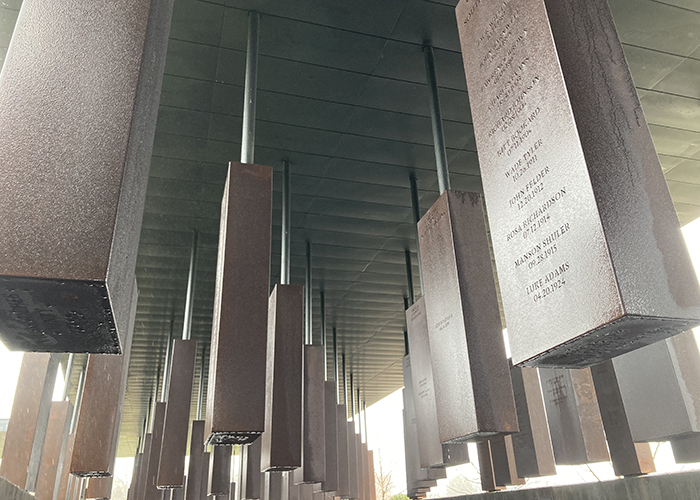 Previous Day |
Montgomery, AL → Selma, AL → Montgomery, AL 100.0 mi (160.9 km) |
 Next Day |
Snow’s a blowin’, everyone!
I dodged the thunderstorms yesterday, but this morning, the Saskatchewan Screamer has screamed down on central Alabama with lots of snow! I wasn’t going to let that stop me on my quest for history, though, because the folks who made that history in Selma, where I was headed, faced far more terrifying obstacles!
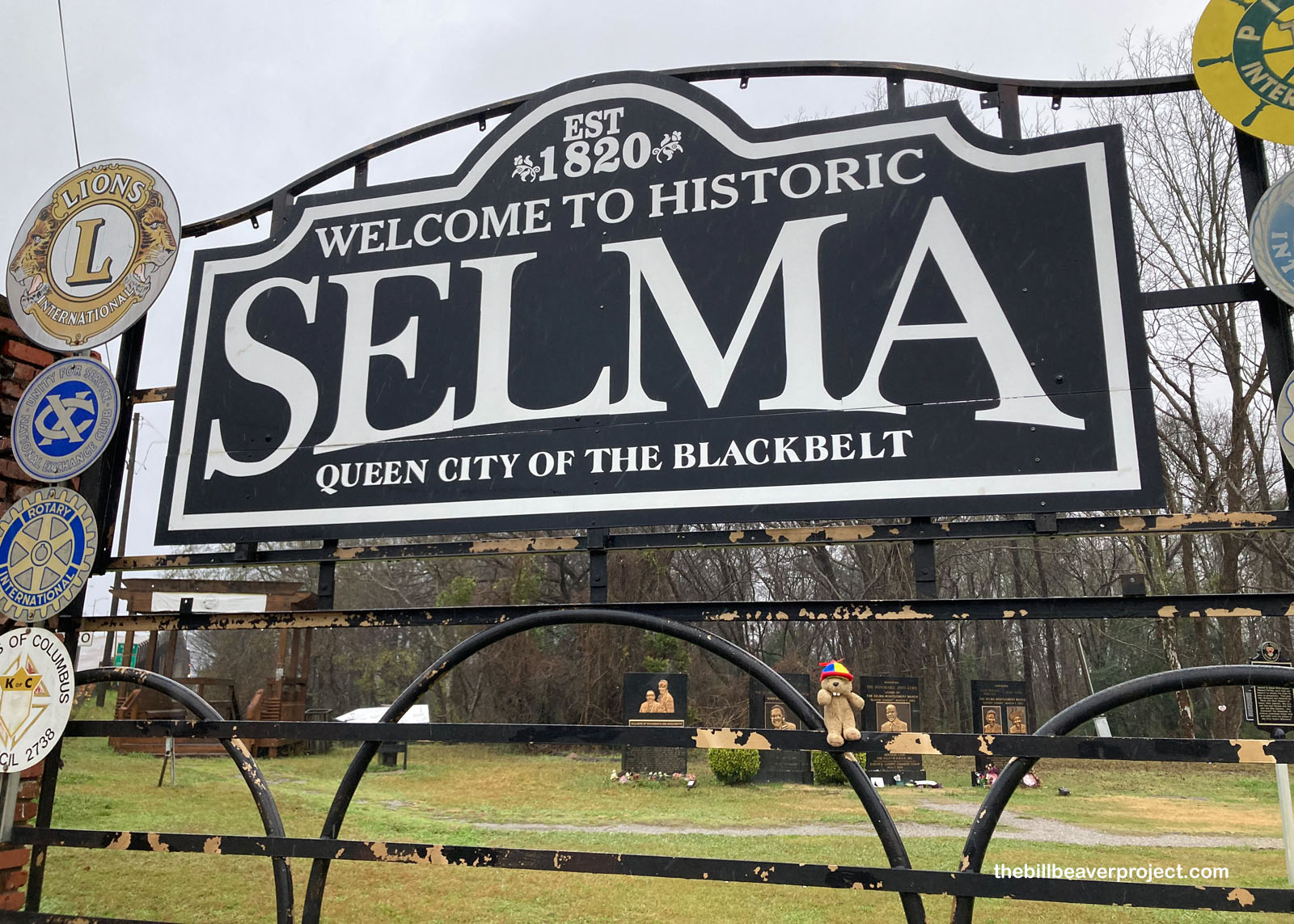 |
See, Selma was founded as a cotton port in 1820, the Queen City of the Black Belt, but because it was so dependent on black soil and Black bodies to work it, after the Emancipation and Civil War, Selma turned hostile toward the free Black folks that continued to live there. A plaque memorializing the racial terror and lynchings in Selma set the stage for what lay ahead.
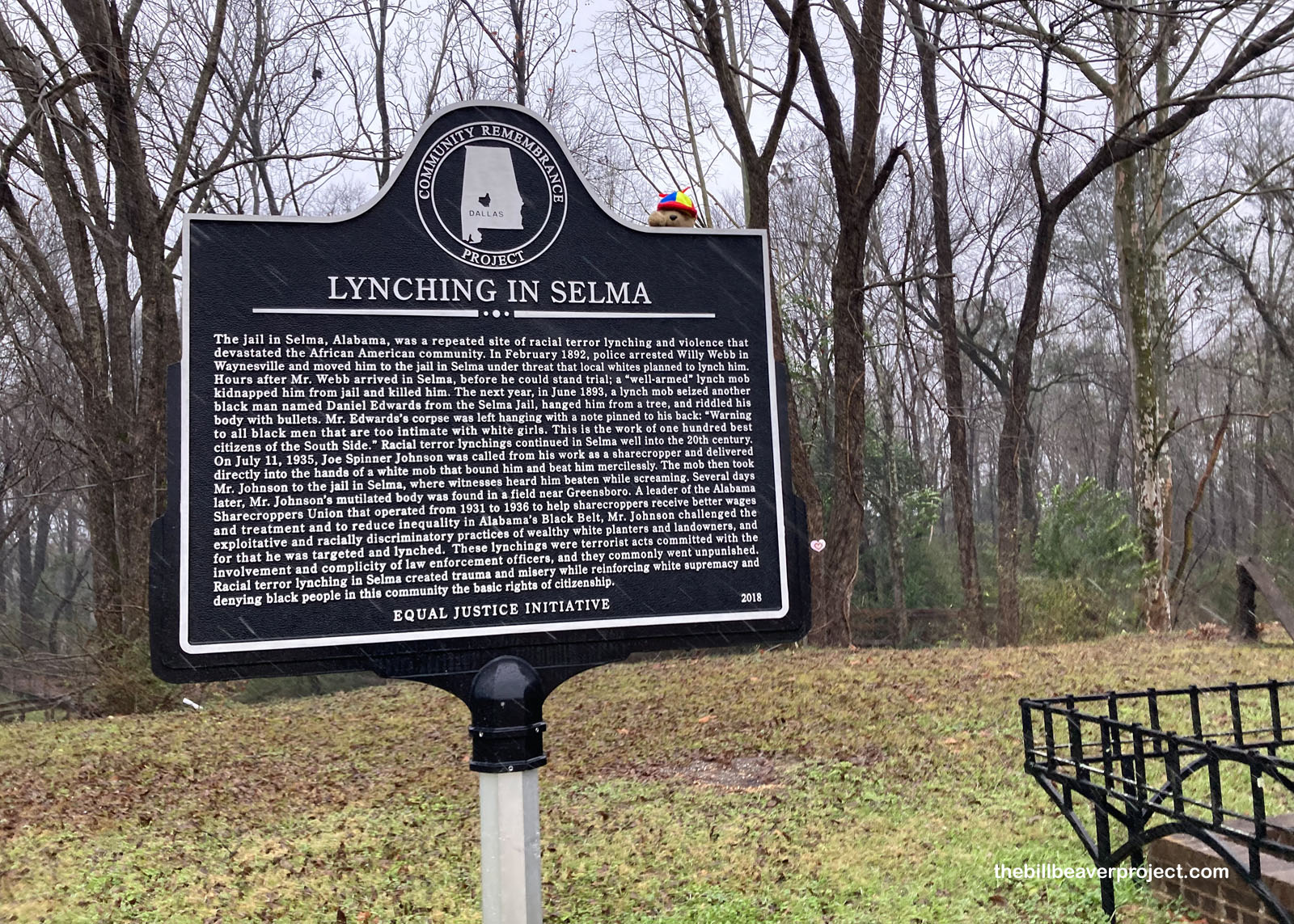 |
The memorial park across the river from Selma had monuments to the courageous folks who took part in the dangerous marches to Montgomery in 1965. Their mission was to protest unjust election laws that denied the vote to Black folks through literacy tests, poll taxes, and general intimidation, and this park both honored folks like John Lewis, who braved beatings and arrests to march, and grieved folks like Jimmie Lee Jackson, who was shot by state troopers while protecting his mom, Viola. In short, the dark and chilly weather matched the mood of today’s important history.
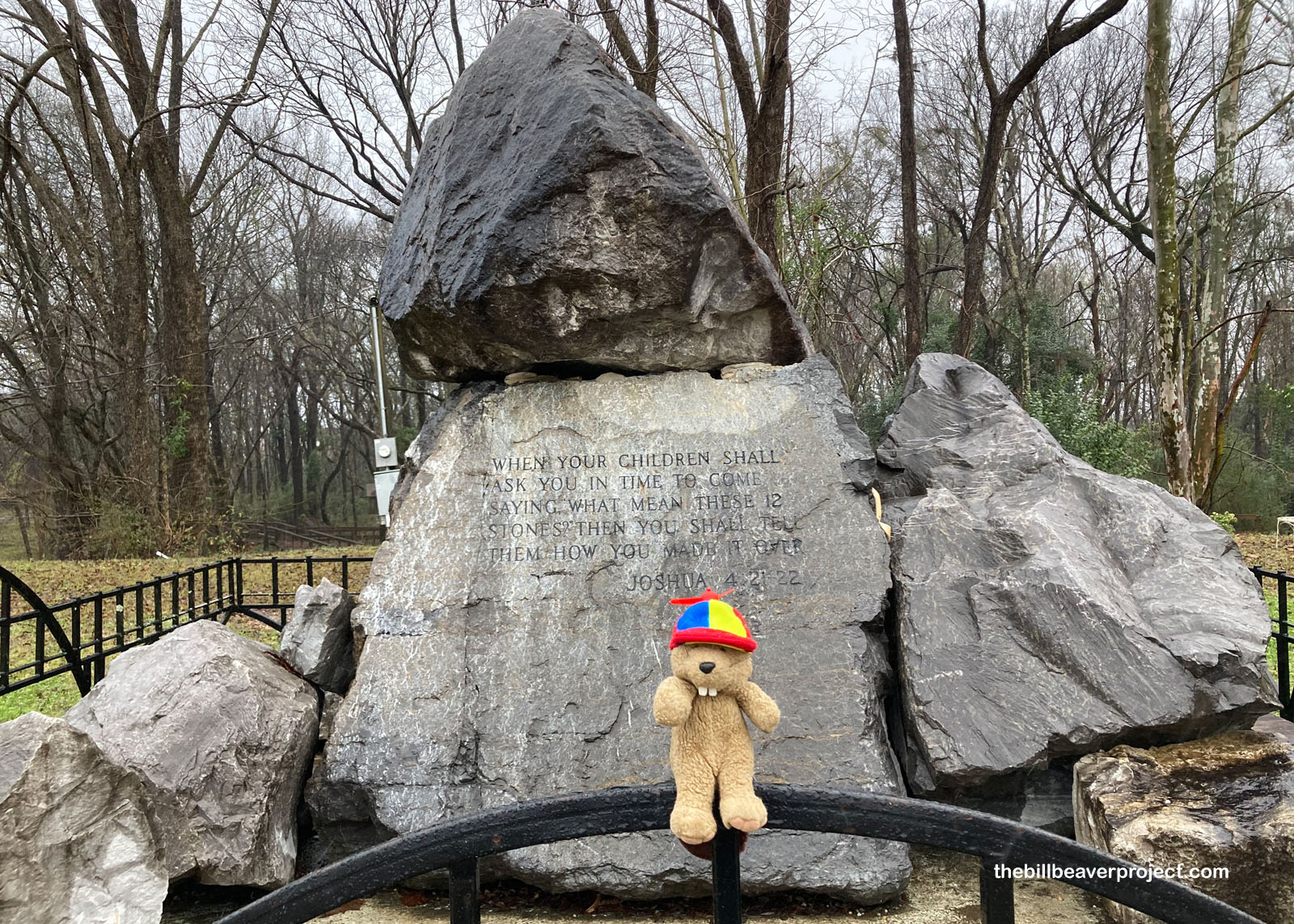 |
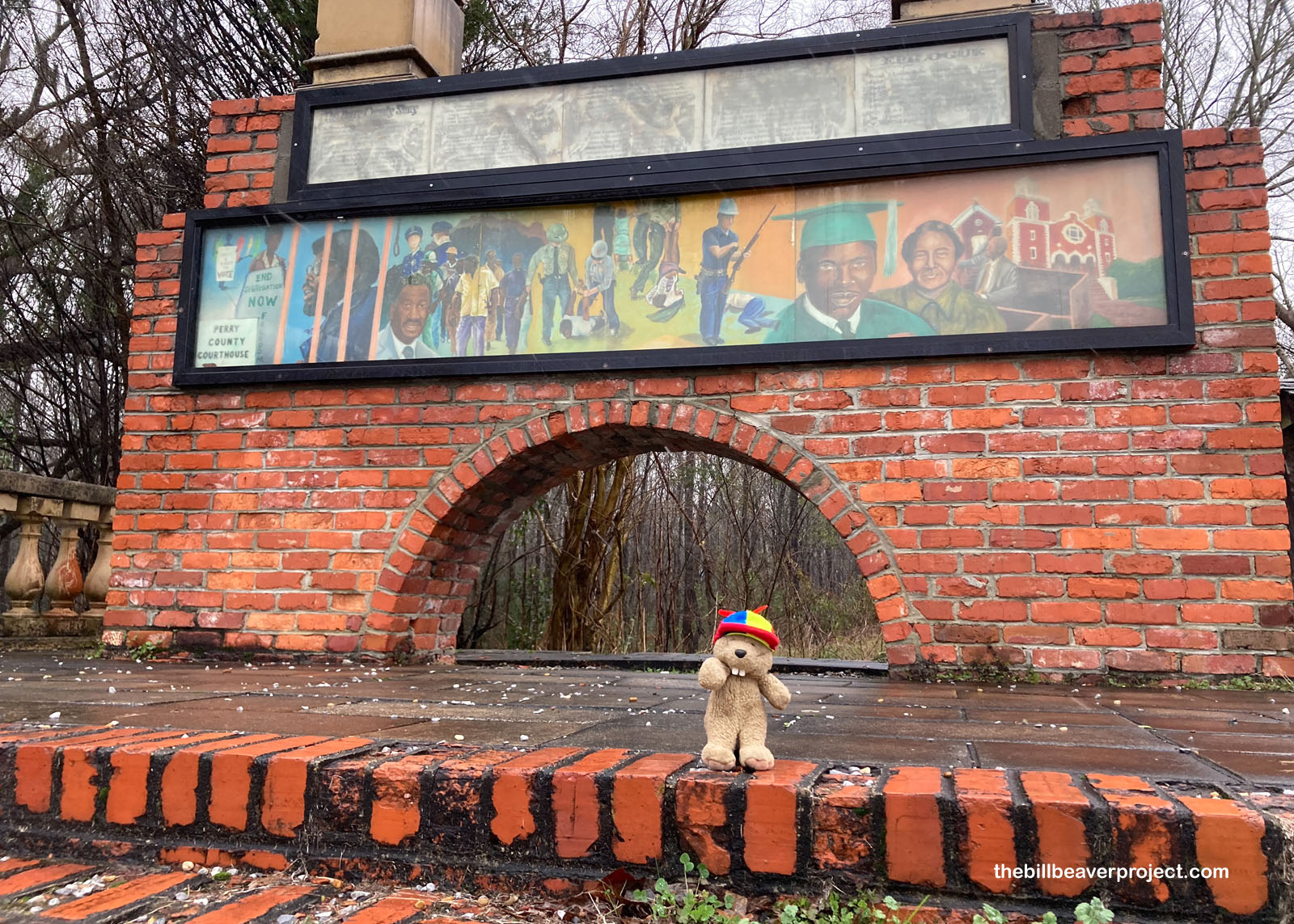 |
Even though the 15th Amendment had guaranteed the right to vote, regardless of race, since 1870, here in Dallas County, circa 1961, only 156 out of 15,000 Black folks of voting age were registered to vote! That low rate made county seat, Selma, the ideal place for three organizations to join forces: the Dallas County Voters League (DCVL), the Student Nonviolent Coordinating Committee (SNCC), and the Southern Christian Leadership Conference (SCLC). Together, they would bring attention to this illegal voter suppression on a national scale not seen before!
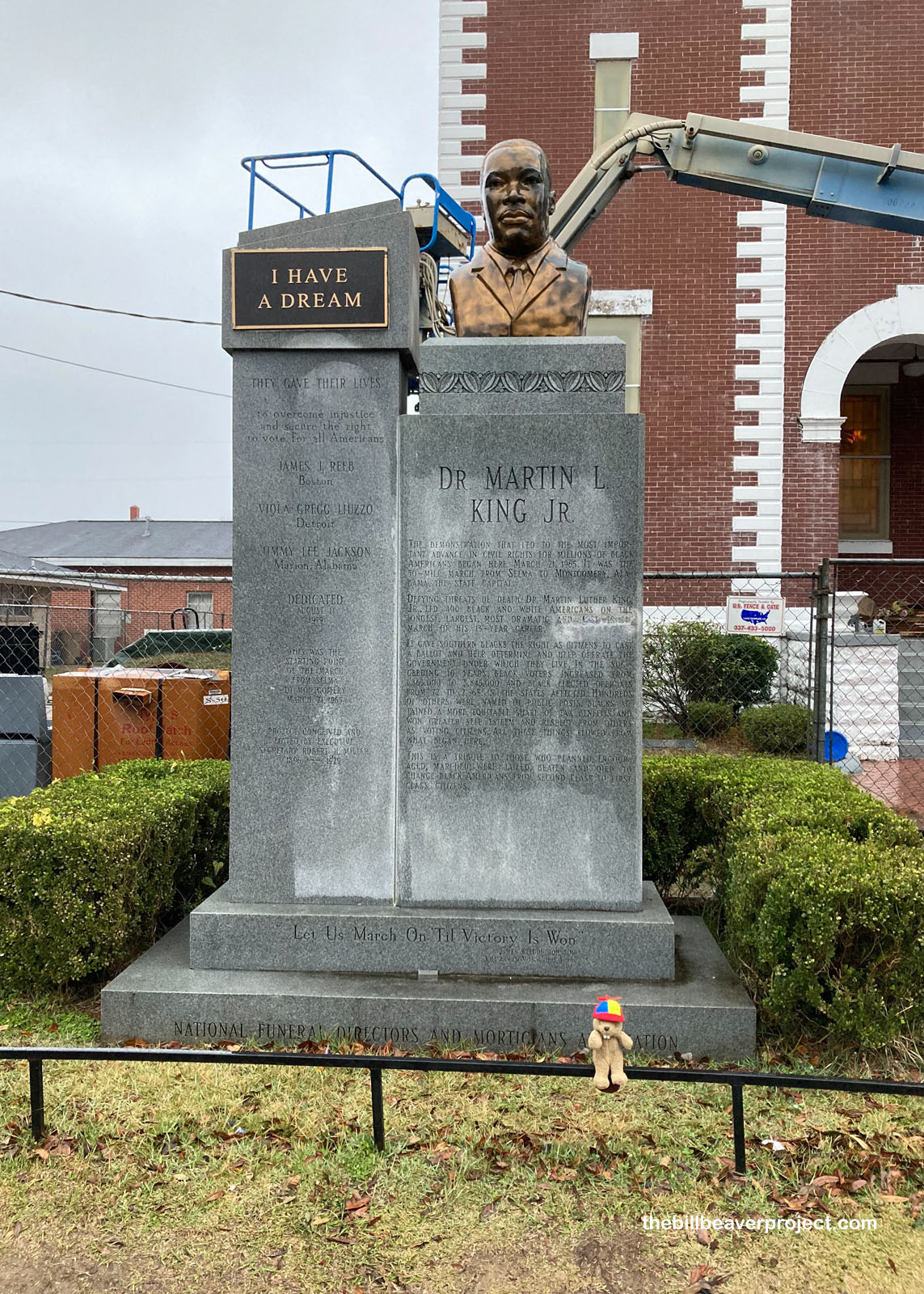 |
Though Black folks were routinely banned from large public gatherings, those rules didn’t extend into churches. This loophole in racist policies gave religious leaders like Rev. Frederick Reese (DCVL) and Rev. Martin Luther King, Jr. (SCLC) a way to plan and organize without getting interrupted by law enforcement. That couldn’t last forever, though, and on January 2, 1965, Rev. King defied a court injunction to hold a rally right here at the Brown Chapel African Methodist Episcopal Church. Also from this church, on the 18th, the first march set out to register new voters at the county courthouse, but the sheriff’s department denied them entry. They tried again the next day, and the sheriff roughed up Amelia Boynton (DCVL), an act that was photographed and published in national newspapers! Thus began the age of accountability by camera!
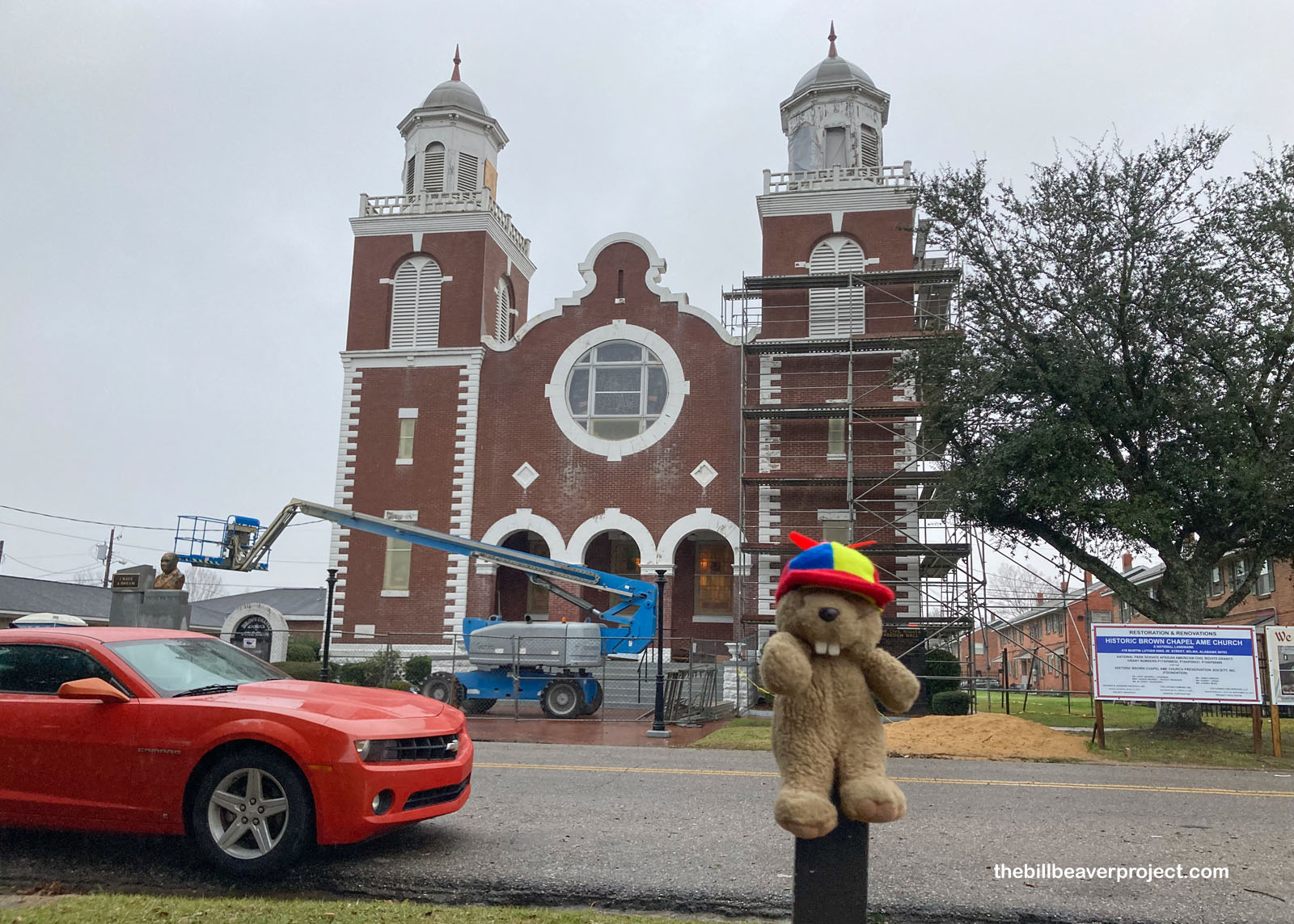 |
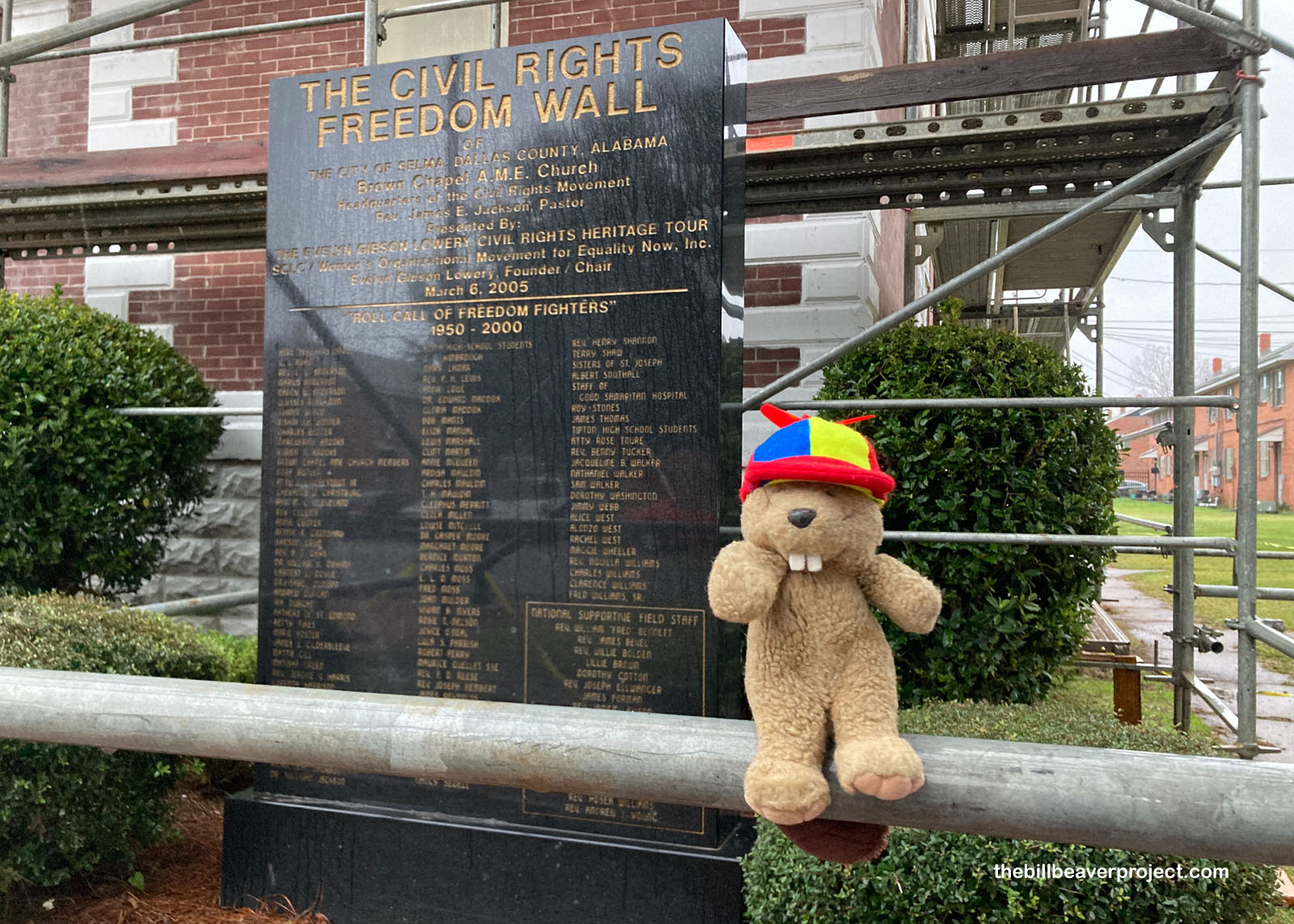 |
With the nation’s angry eyes turning to Selma, the marches from the church to the courthouse continued into February when the shooting of Jimmie Lee Jackson pushed the need for change beyond the city of Selma to the state capital at Montgomery. John Lewis (SNCC) and Hosea Williams (SCLC) led the first symbolic crossing of the Edmund Pettus Bridge on Sunday, March 7, 1965, which came to be called Bloody Sunday! A sheriff’s posse awaited them with whips, nightsticks, and tear gas, all of which was again, caught on camera, and again put this movement on the national radar.
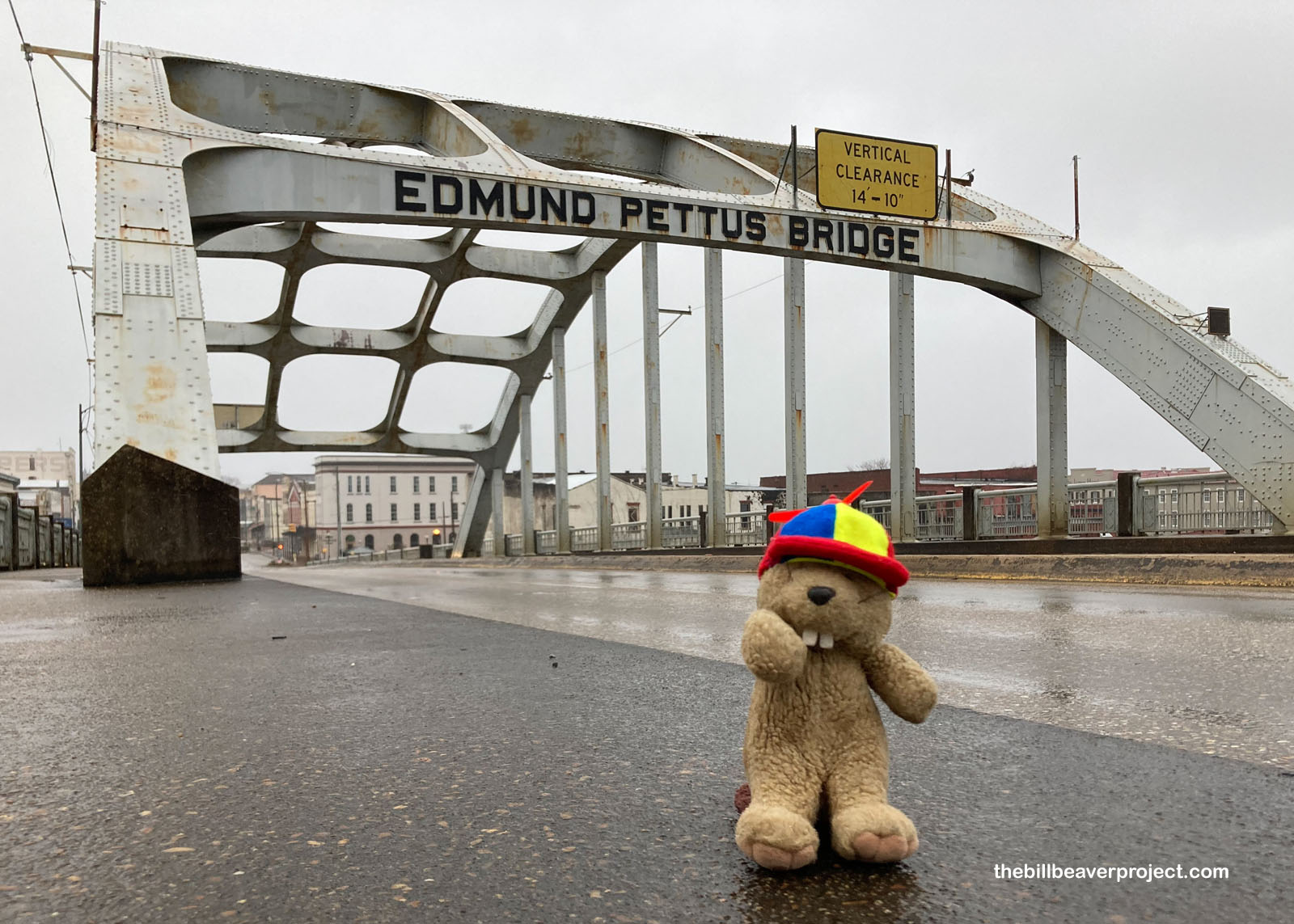 |
But this was the month of March, and the marches would continue! Two days after Bloody Sunday came Turnaround Tuesday. 2,000 marchers crossed the bridge again, but because of a court injunction, they stopped short this time and held a prayer service. It would be weeks before the injunction lifted and the march to Selma could continue. By this time, President Johnson got involved, pushing Congress to pass a voting rights bill and deploying 1,900 Alabama national guard troops and 2,000 soldiers to protect the marchers on their triumphant march from Selma to Montgomery!
Though 4,000 set out from Selma, only 300 were able to make the full march, which spanned four days, but when they reached the capitol on March 25, 1965, those numbers rose to 25,000! Their footsteps are memorialized in the crosswalk in front of the Alabama state capitol! Here, Dr. King gave his “Our God is Marching On!” speech, encouraging everyone to keep marching, through beatings and burnings and bombings, until they gained economic, educational, and electoral equality!
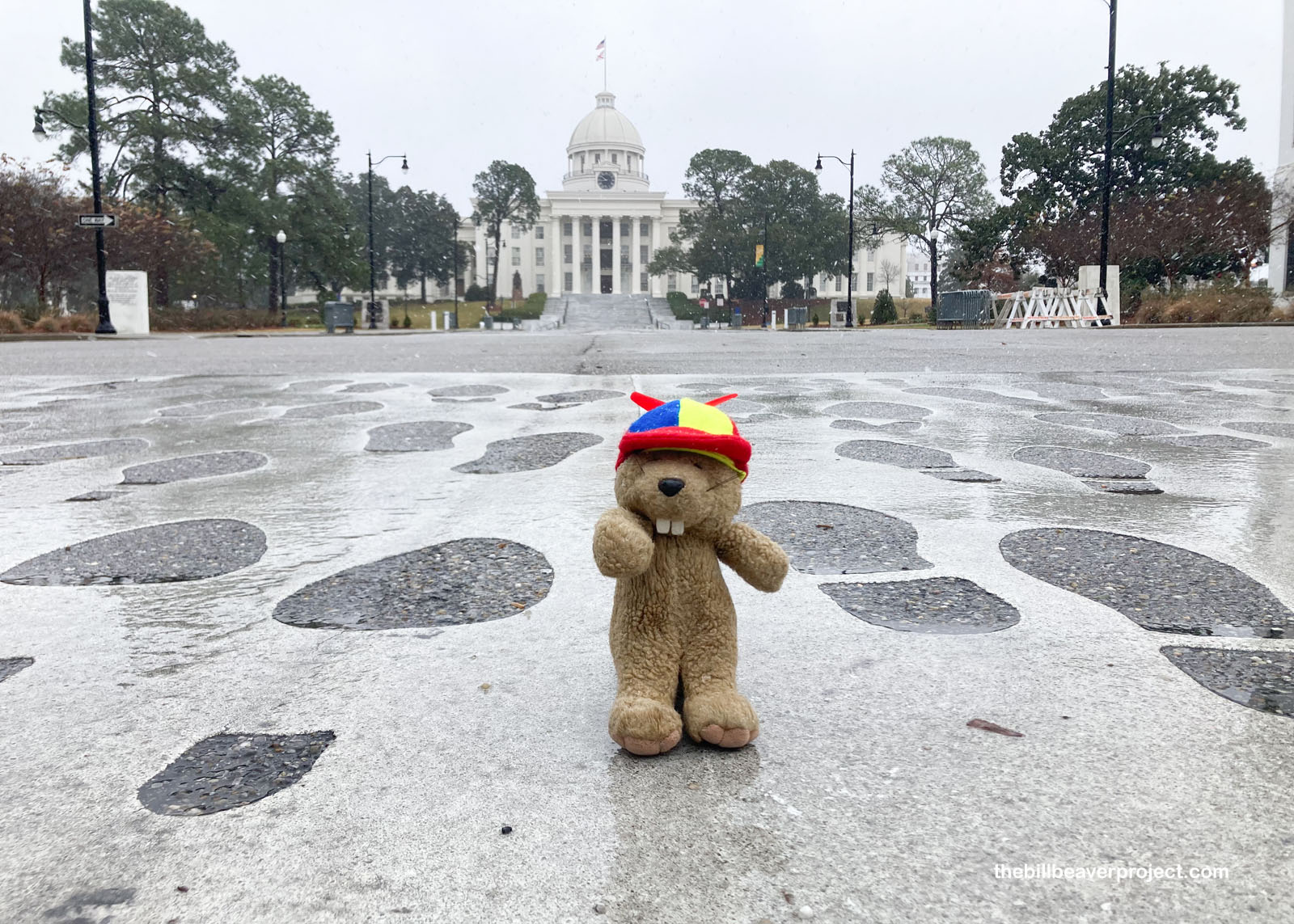 |
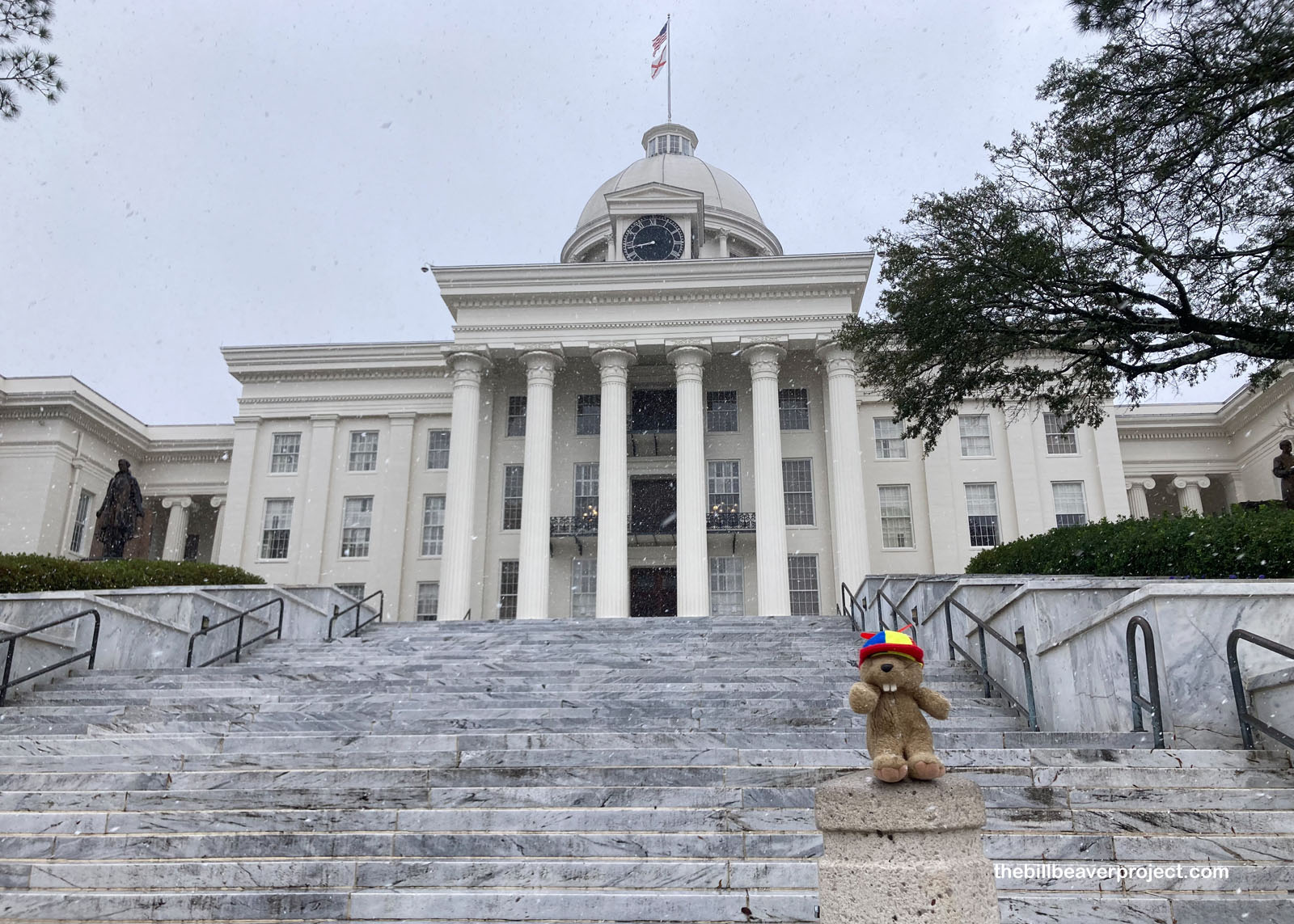 |
It’s also important to note that several marchers carried an American flag to the capitol, which, at the time, was flying the Confederate flag. That’s because Montgomery was the first capital of the Confederacy, where seceding states met to frame their new, pro-slavery, government in February of 1861. In fact, Montgomery was so pro-slavery that 1833, the legislature banned any free Black person from settling or living in Alabama at all! Those who were caught had 30 days to vacate or be lashed and possibly sold back into slavery!
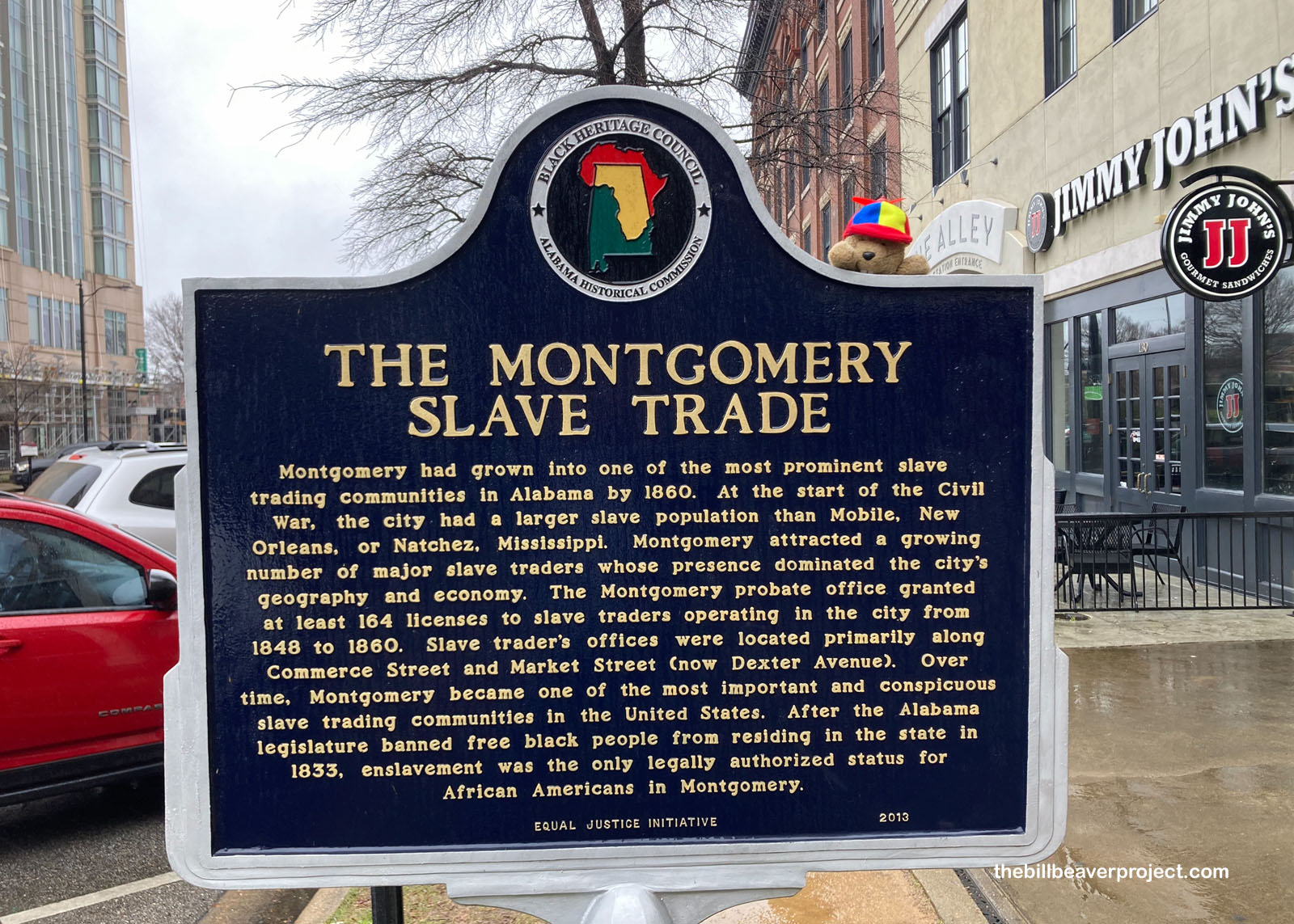 |
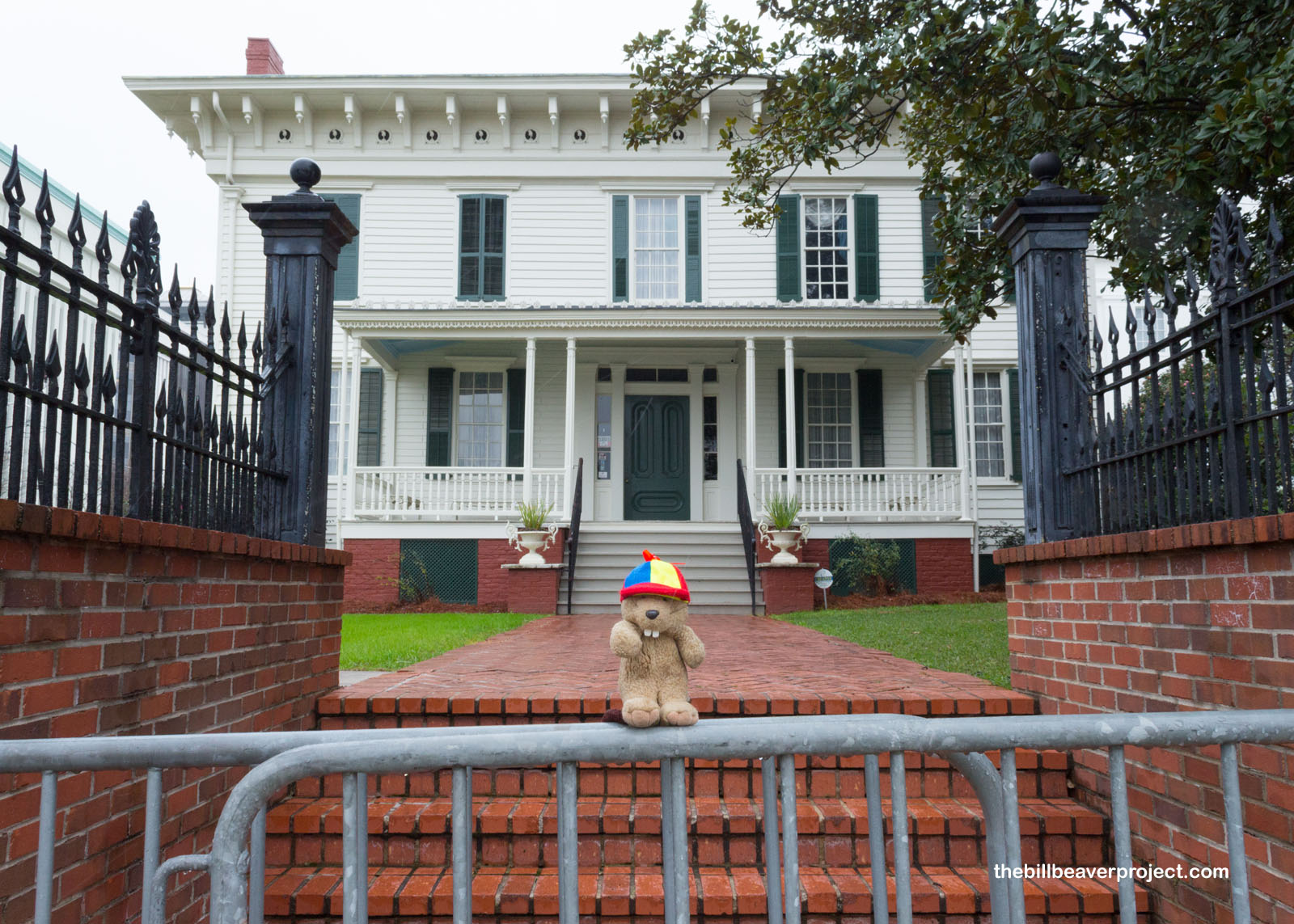 |
It was also super significant that the Dexter Avenue Memorial Baptist Church arose here on what was Market Street, mere footsteps from the center of Montgomery’s former slave trade and from the capitol building! Built between 1883 and 1889, this church housed the first student body of the Normal School for Colored Students, now Alabama State University! It was also the home church of Rev. Martin Luther King, Jr. from 1954 to 1960, and when I visited, the church was getting ready for tomorrow’s holiday honoring Rev. King’s birthday! It was from this church that he had directed the Montgomery Bus Boycott of 1955!
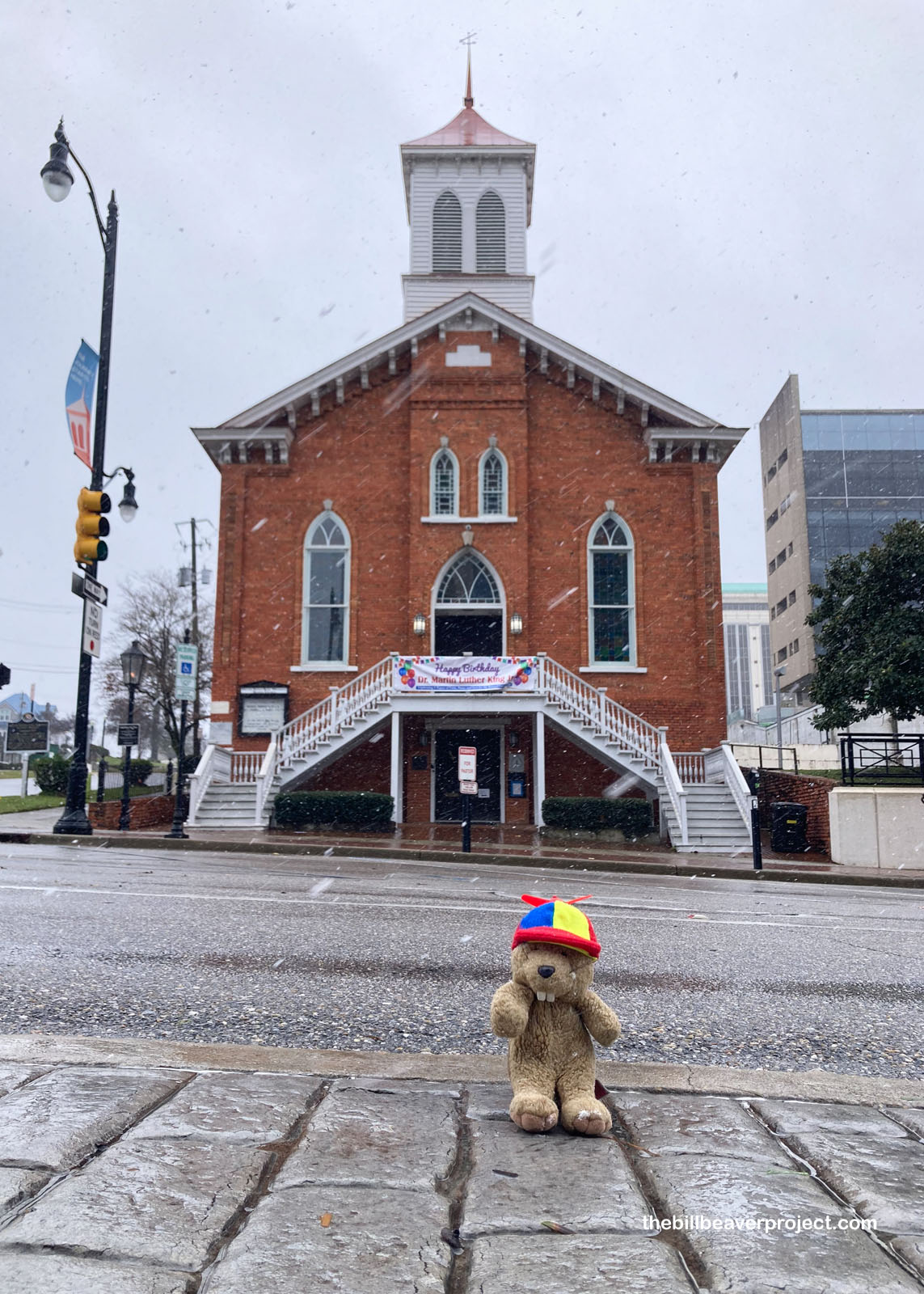 |
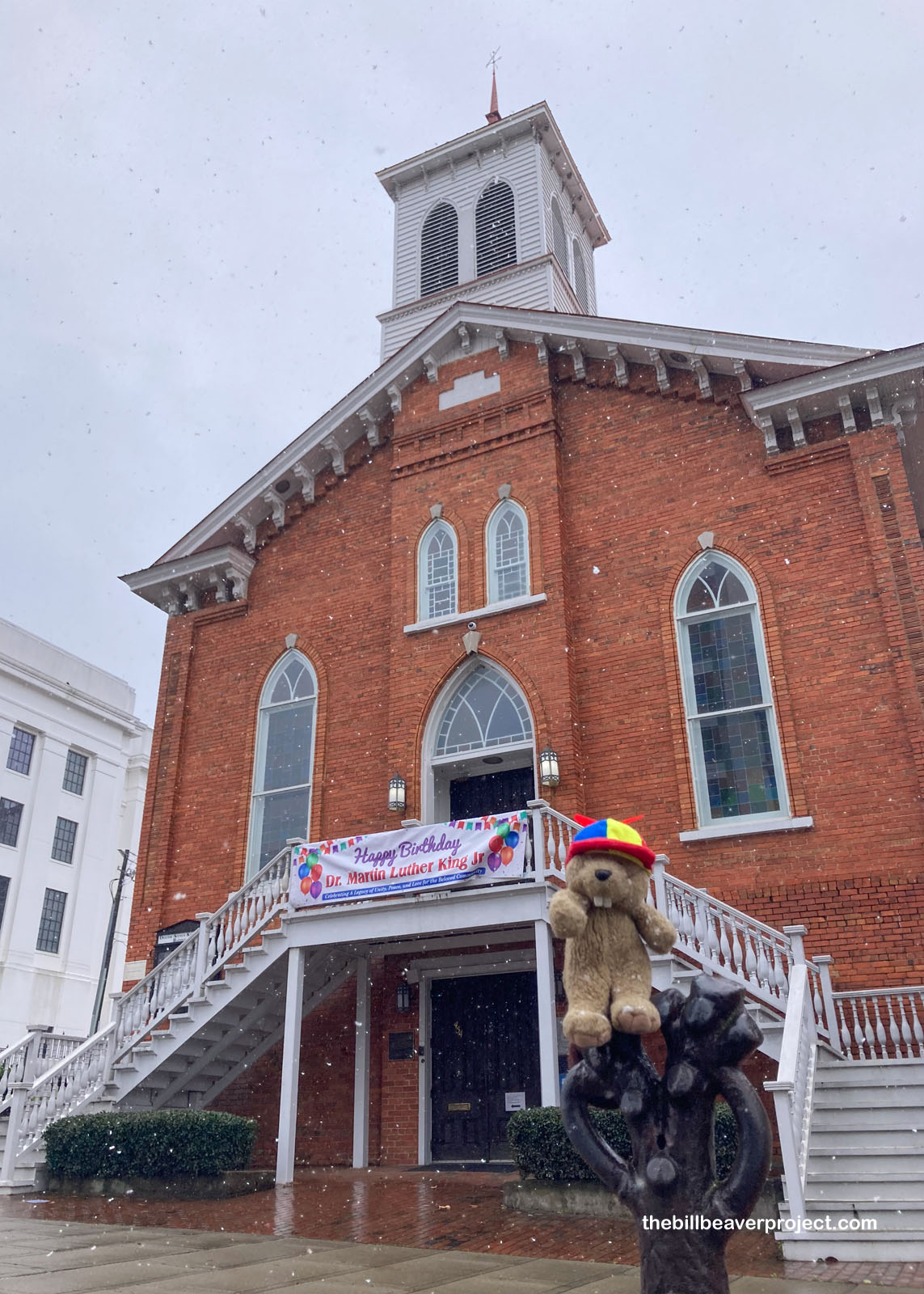 |
That, of course, had been set off by the arrest of Rosa Parks on December 1, 1955. Under Montgomery bus law, even though 75% of folks who rode the buses were Black, a driver could designate a “Blacks Only” section wherever he wanted to accommodate any white riders. Mrs. Parks had been kicked off buses before for using the front entrance or otherwise sitting outside the movable zone, even if it moved after she took her seat. That’s what happened on December 1st! She’d started the ride within the “Blacks Only” section, but the driver moved the sign back to accommodate new white riders. Only four months after the brutal murder of Emmitt Till in Mississippi, Mrs. Parks decided she was done moving. Today, a museum honors her resistance, which led to a yearlong boycott and the Supreme Court decision, Browder vs. Gayle (November 13, 1956), that struck down these bus laws for violating the 14th Amendment’s Equal Protection Clause!
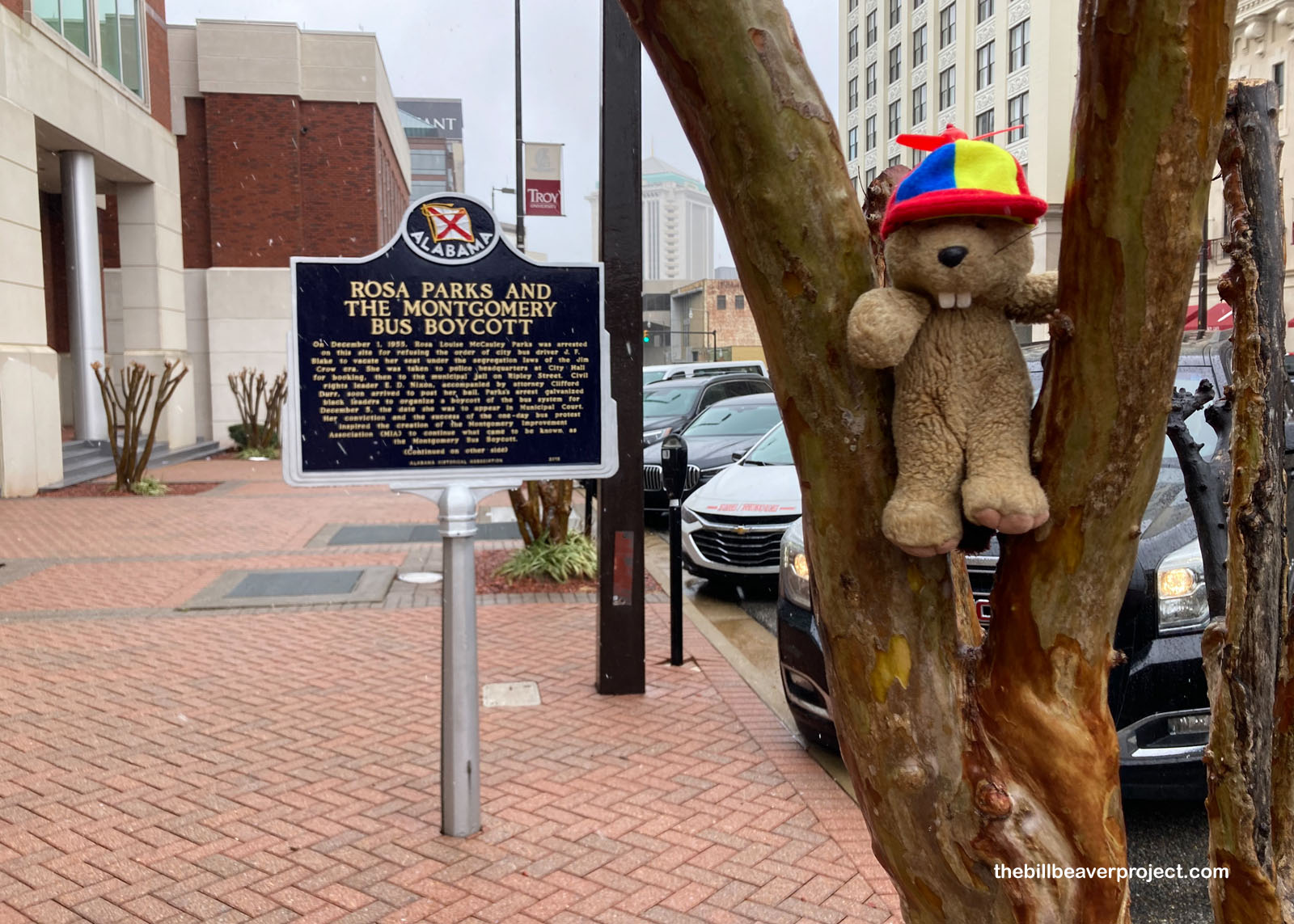 |
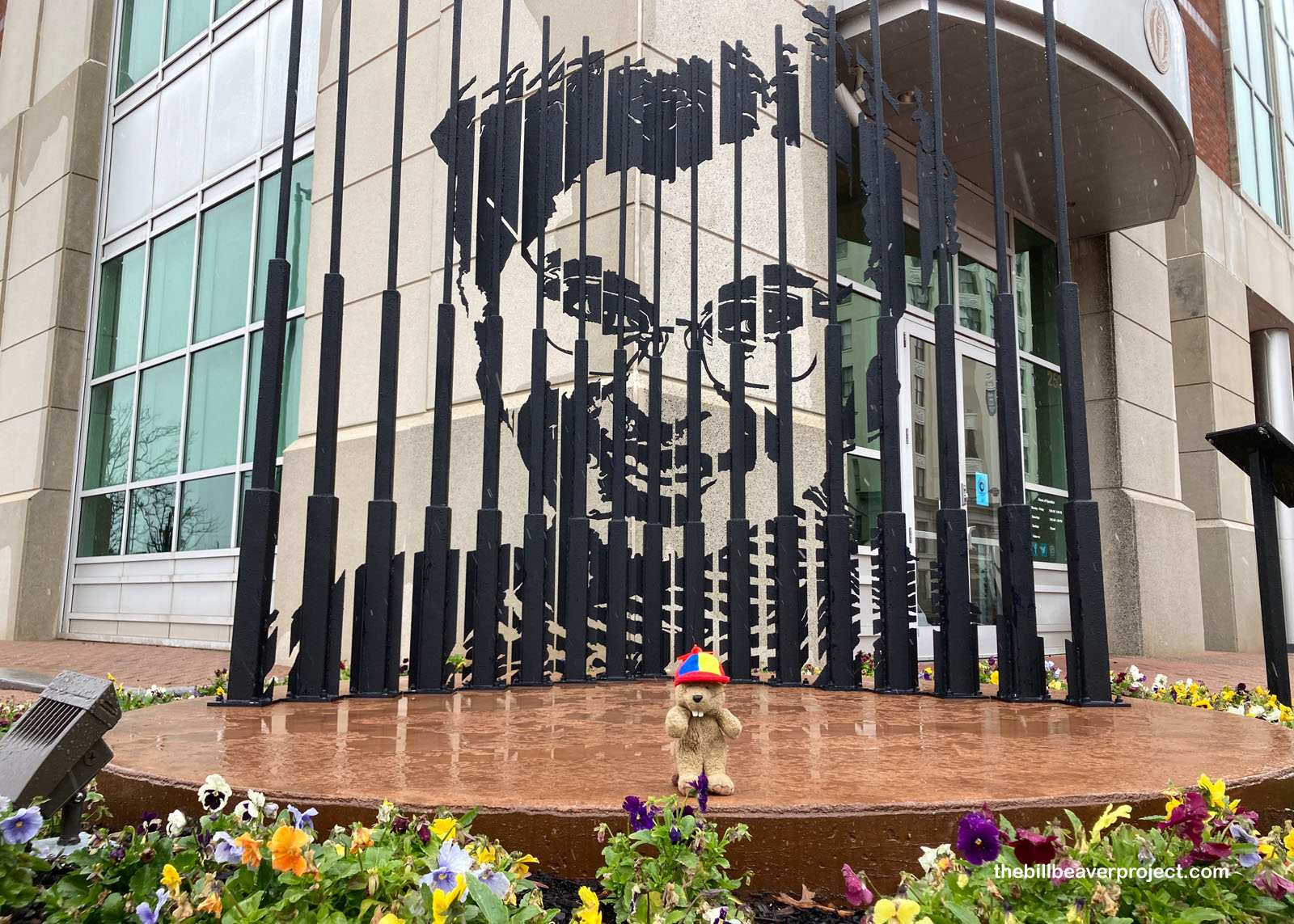 |
Sadly, the success in Montgomery didn’t spread everywhere right away. Remember the Freedom Riders from yesterday? Their rides started five years after Browder vs. Gayle! A museum here commemorates the second leg of the journey, from Birmingham to Montgomery. The bus had set out under police escort, but by the time they reached the capital, that escort disappeared, and 200 supporters of the Ku Klux Klan attacked them at this terminal. This incident was what finally got Attorney General Robert F. Kennedy involved in the movement!
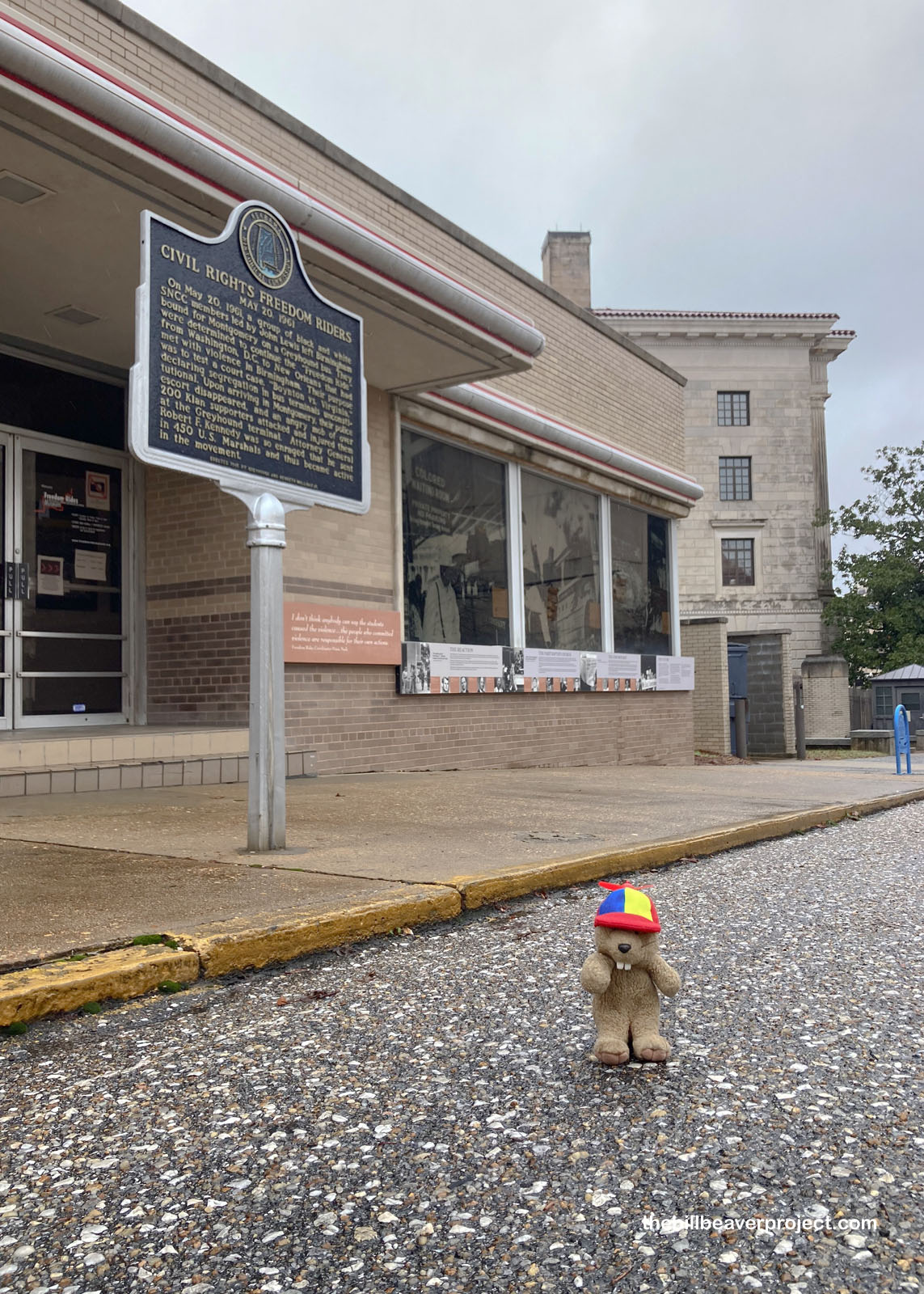 |
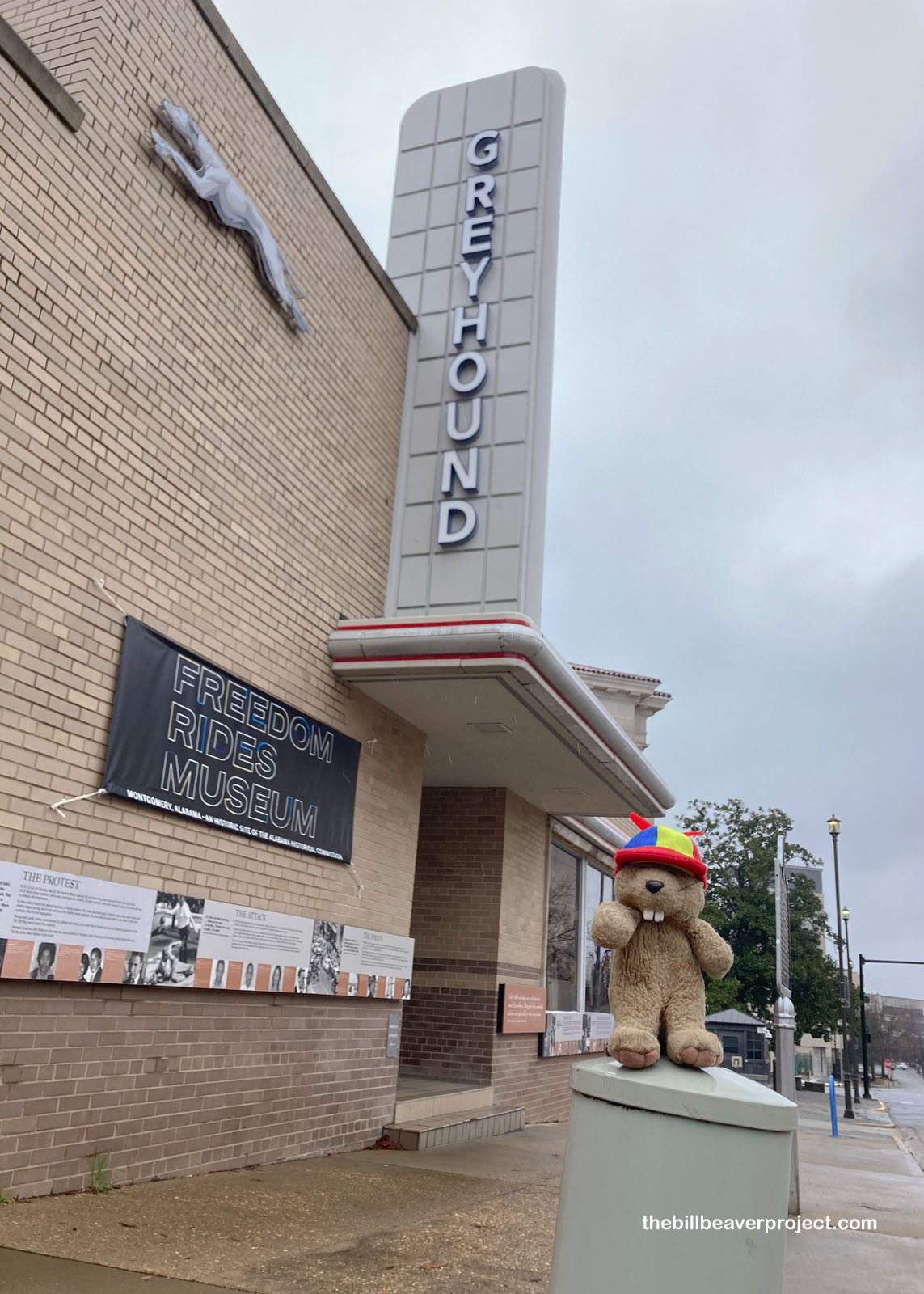 |
In short, Montgomery, Alabama is the place to be for learning about the civil rights movement in America. The big names like Rosa Parks, John Lewis, and Martin Luther King, Jr. all had a major impact here in Montgomery, but Montgomery is also home to many names that would otherwise have been forgotten. 4,400 of them are enshrined here at the National Memorial for Peace and Justice.
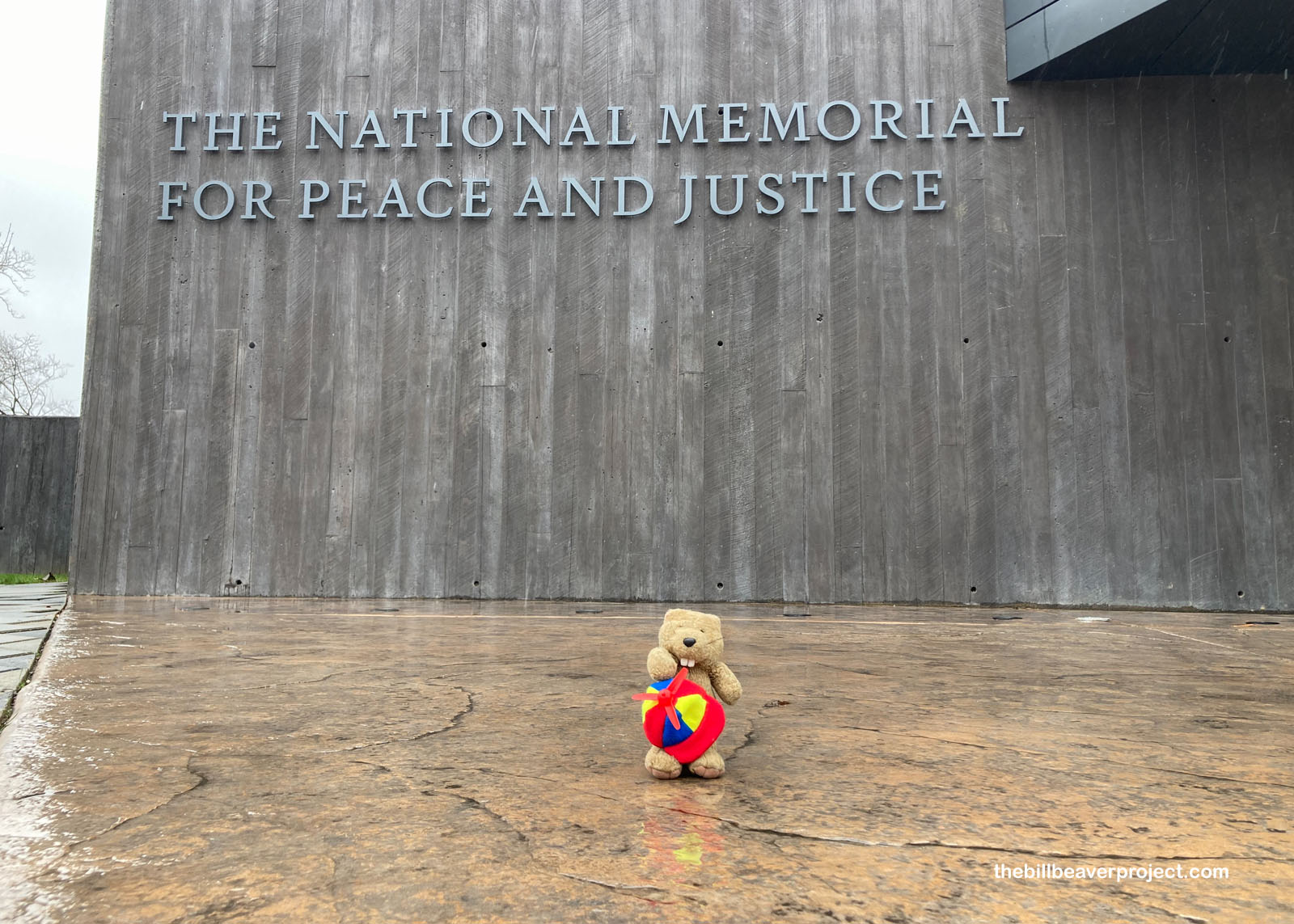 |
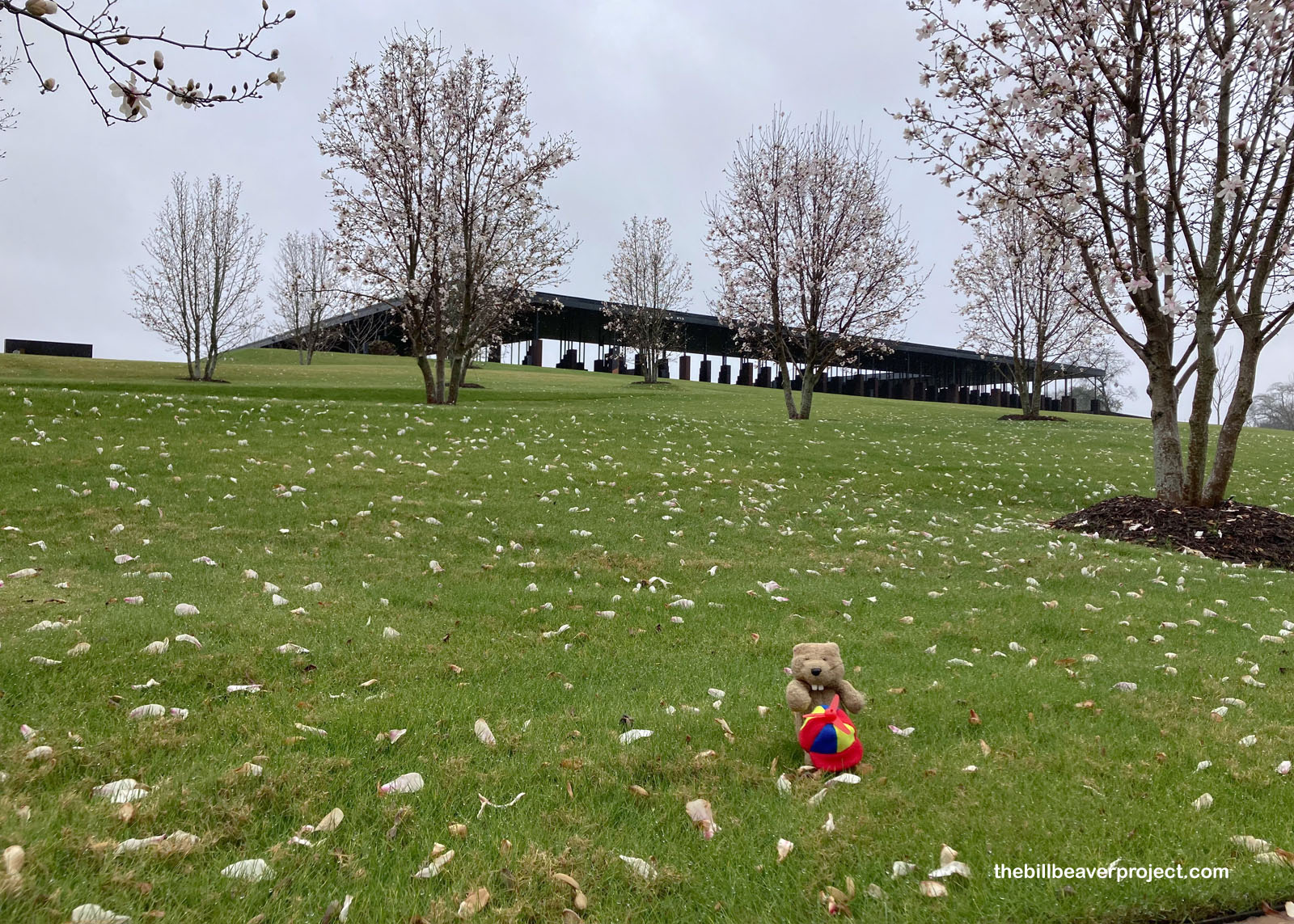 |
This is the nation’s first memorial to racial terror and lynching, and it’s only been open since April 26, 2018! On this six-acre property, there are intense sculptures that show the pain of the first Black folks brought here as slaves to the pioneering women of the Montgomery Bus Boycott. Some of them are too heart wrenching to photograph, in my opinion, and I’ll be honest; I had misgivings about taking photos here at all. This is a very, very heavy place.
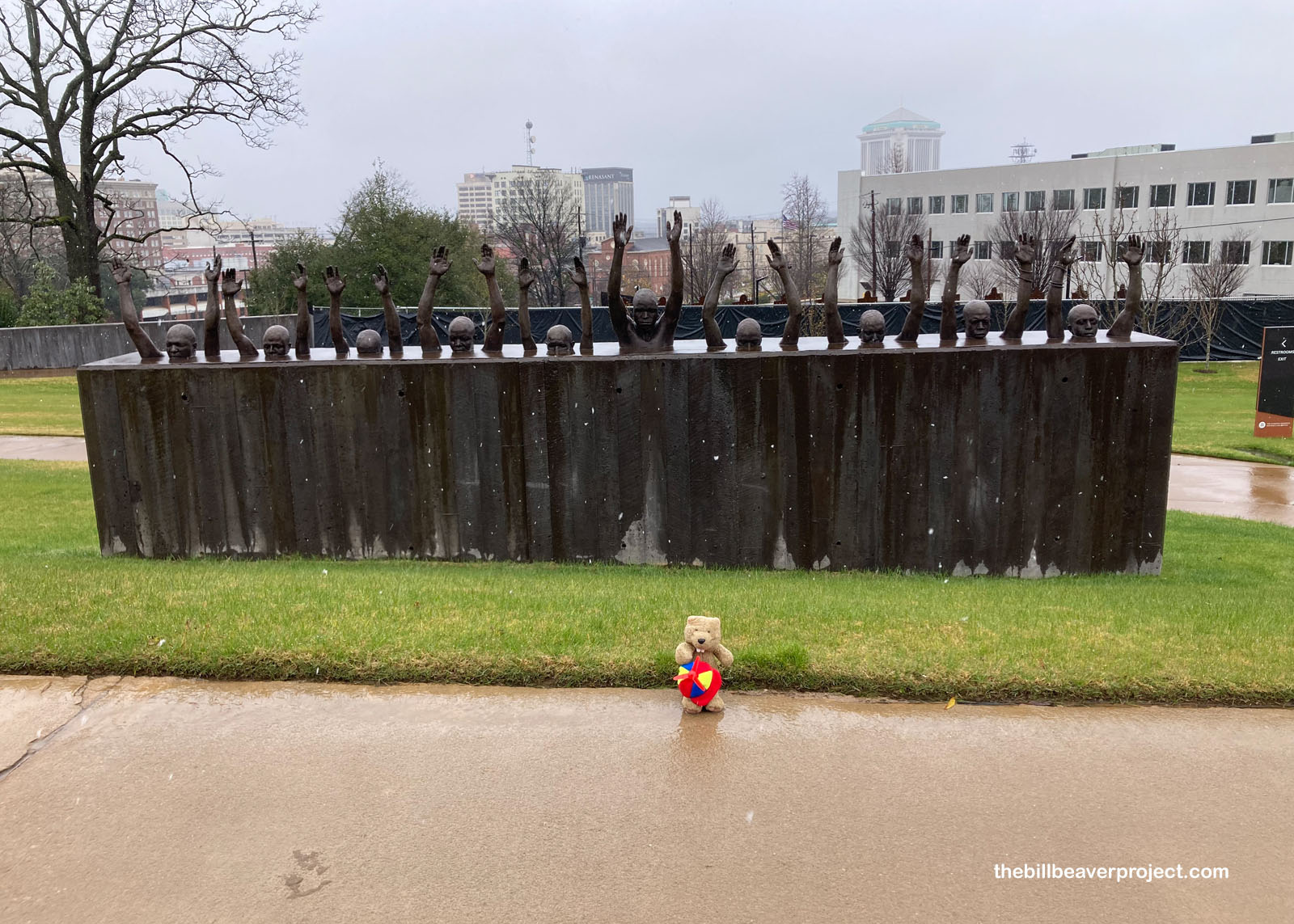 |
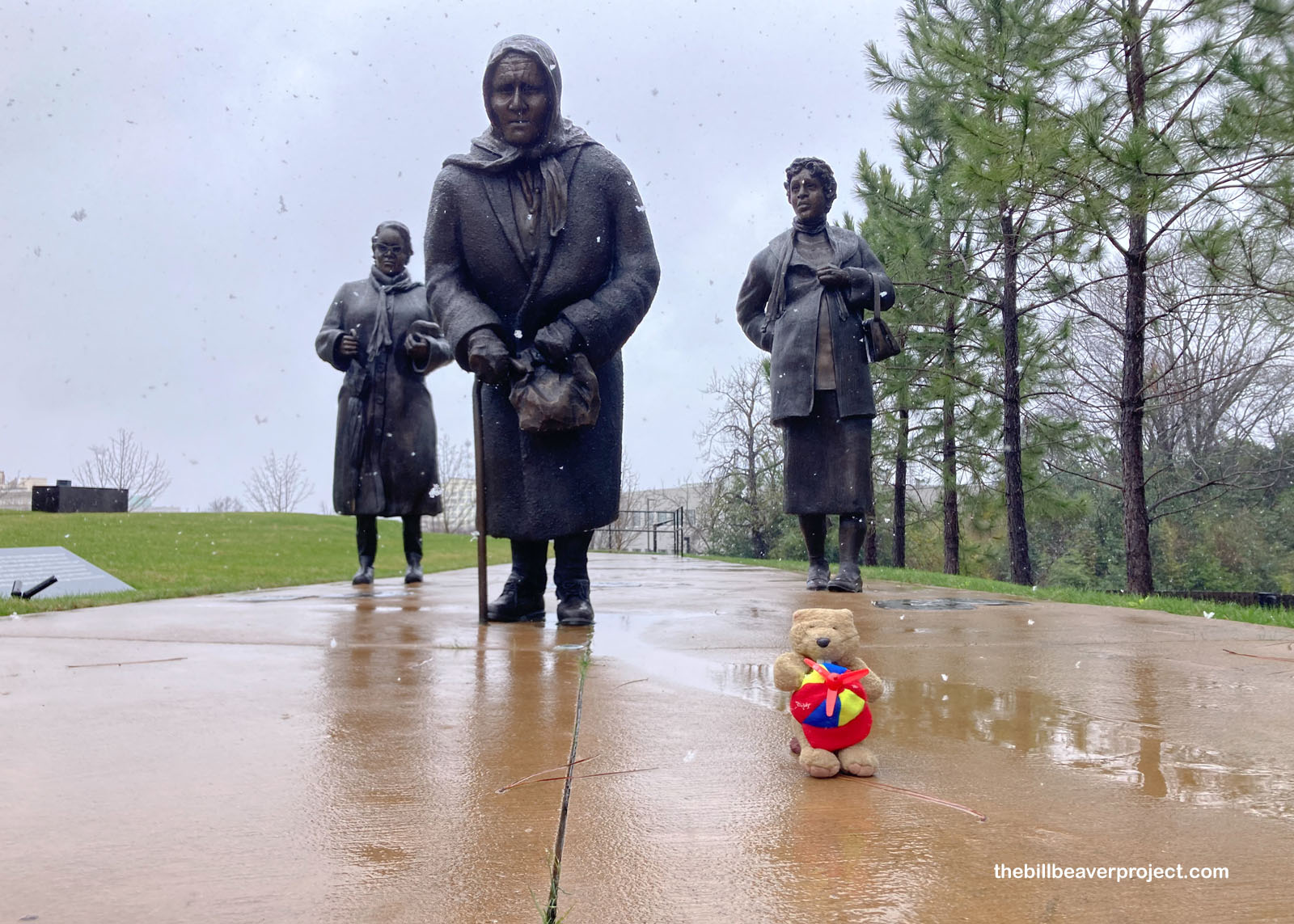 |
Inside the core of this memorial, designed by Michael Murphy of MASS Design Group, there are 800 monuments made of Corten steel, which will rust without decaying. Each represents a US county where a lynching took place between 1877 and 1950. It took eight years of research and planning to find as many names as possible, but some newspaper headlines didn’t even give the victims the dignity of a name, only that they were killed. They’re listed as “Unknown” on their monuments.
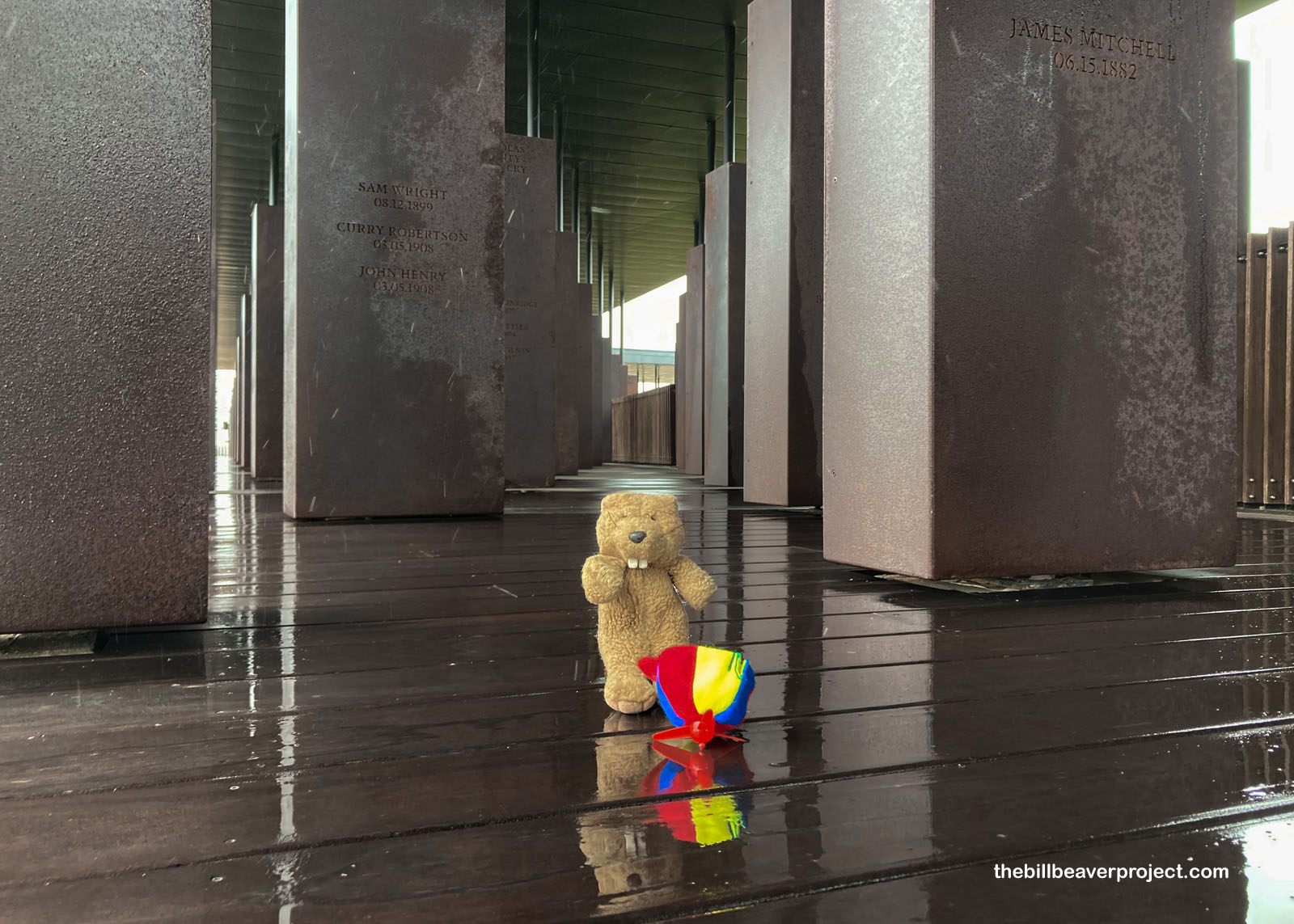 |
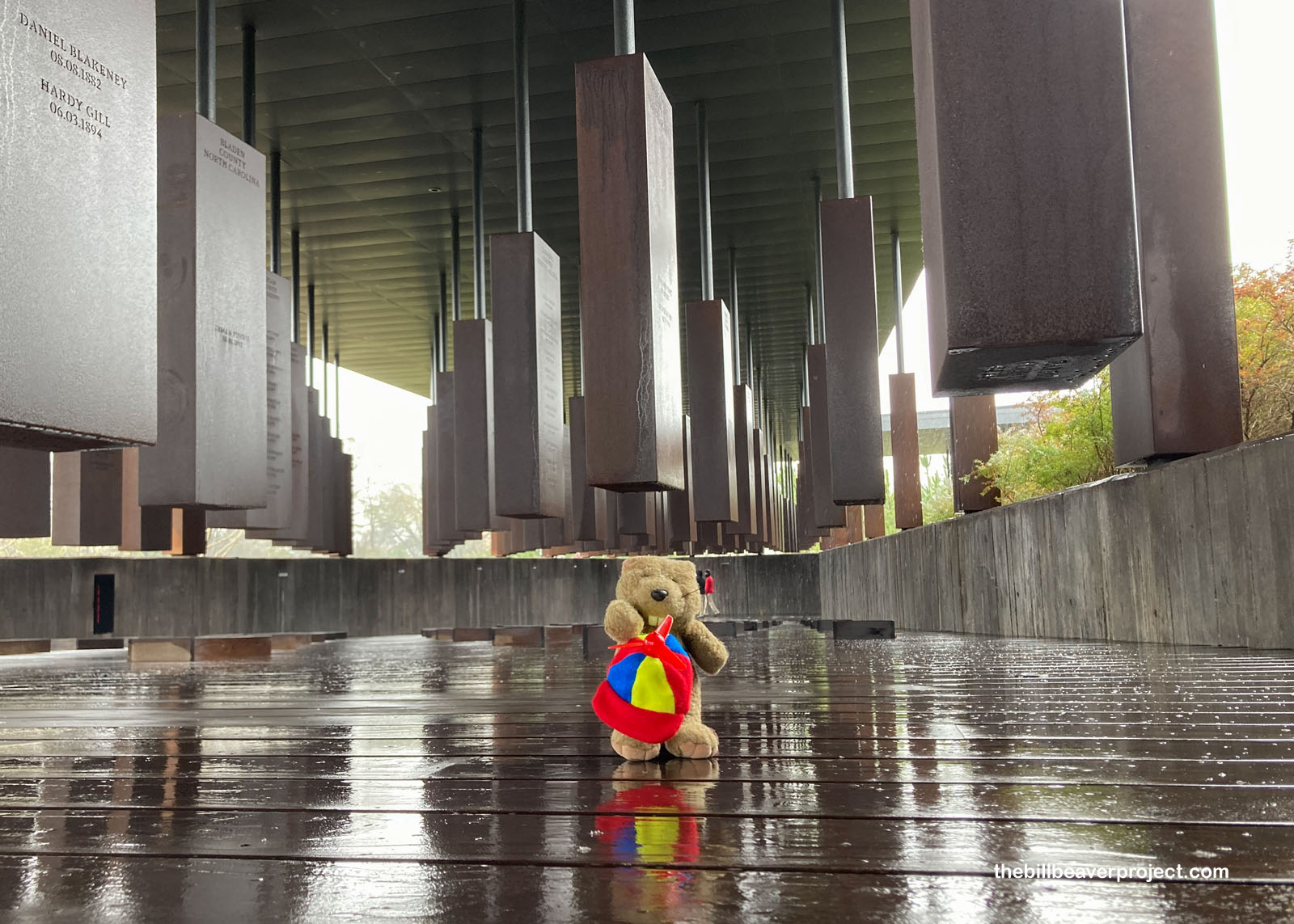 |
All 800 monuments are attached to the roof, but the floor slopes downward, bringing them higher and higher overhead. Walking through here by myself, with the snow flurries blowing, was a lot more than physically chilling. There were so many, representing 36 states! Most of them were in the South, of course, but I asked the two docents if there were any monuments from California. Sure enough, there were two from Kern County, and while California had many more lynchings within its boundaries, mostly of Mexican and Chinese folks, this memorial, based in the South, focuses on racial terror against Black folks.
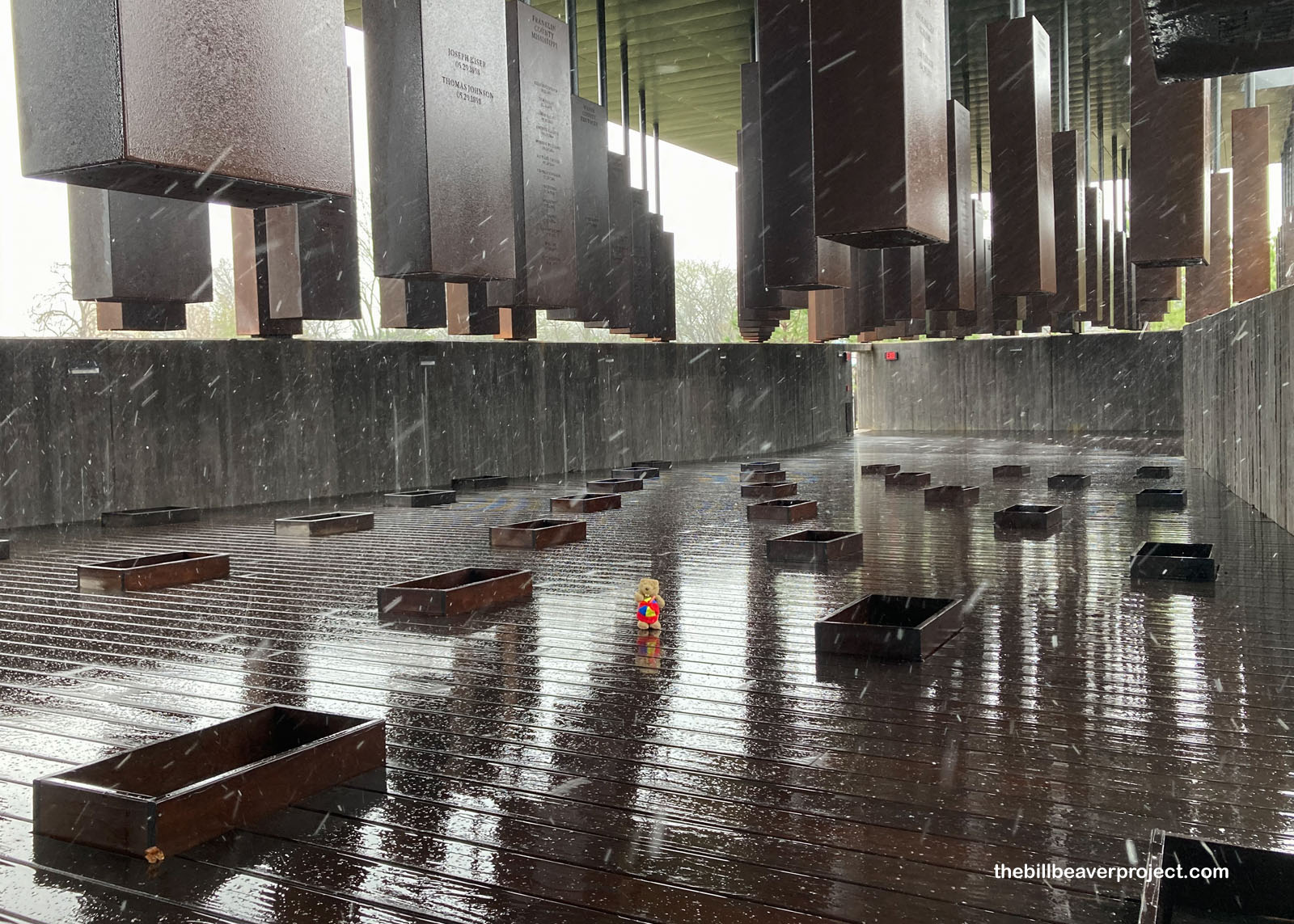 |
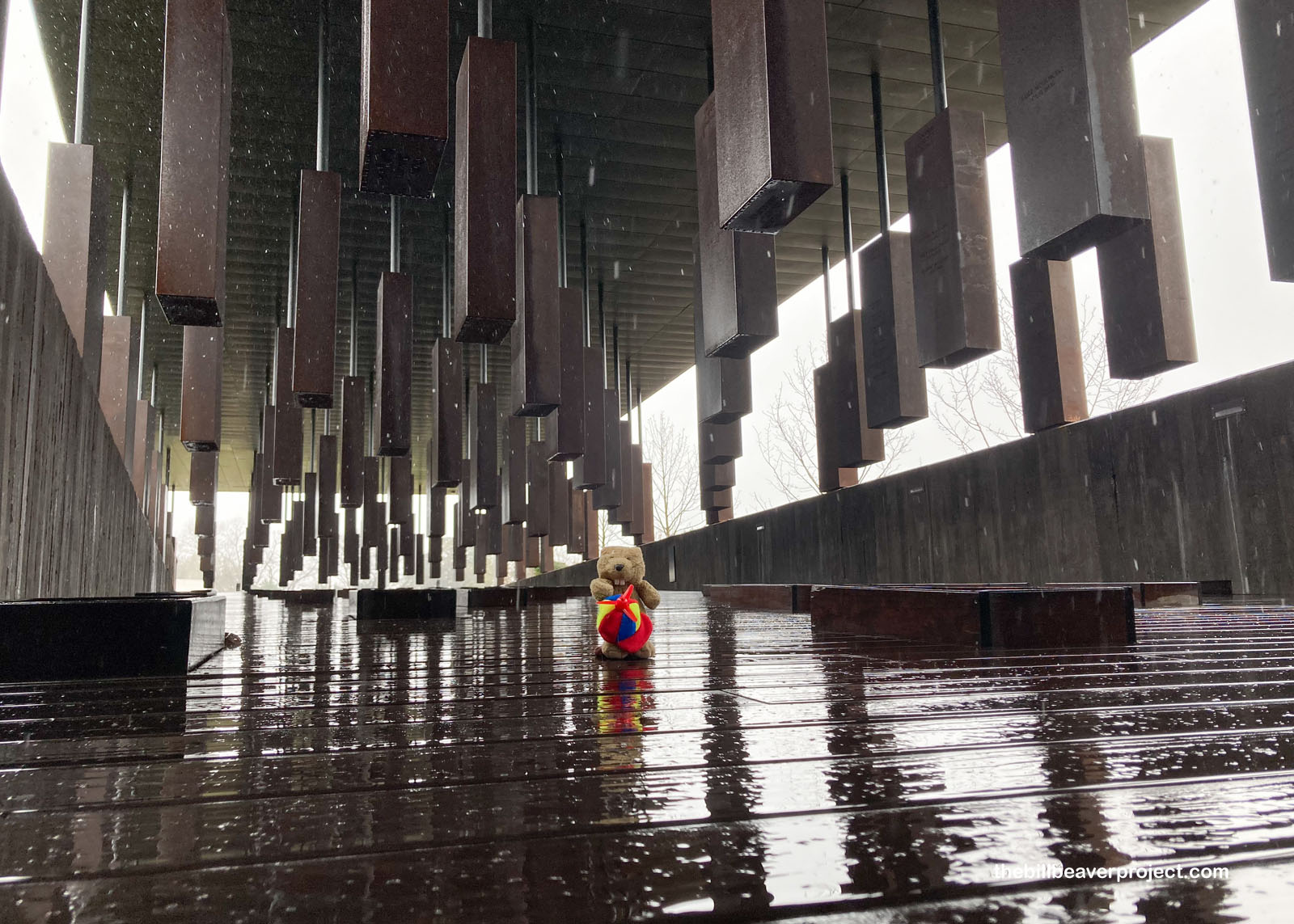 |
This memorial isn’t just contained in this building, of course. Their Community Remembrance Project has two initiatives that extend to all the counties posted here. First, they’re bottling soil from the sites of known lynchings and assembling them in their museum, as close to epitaphs as many of these victims ever got. Secondly, there are duplicates of every steel monument outside. Every county government represented here is invited to take one and install it onsite, but by the time I visited, none had done so.
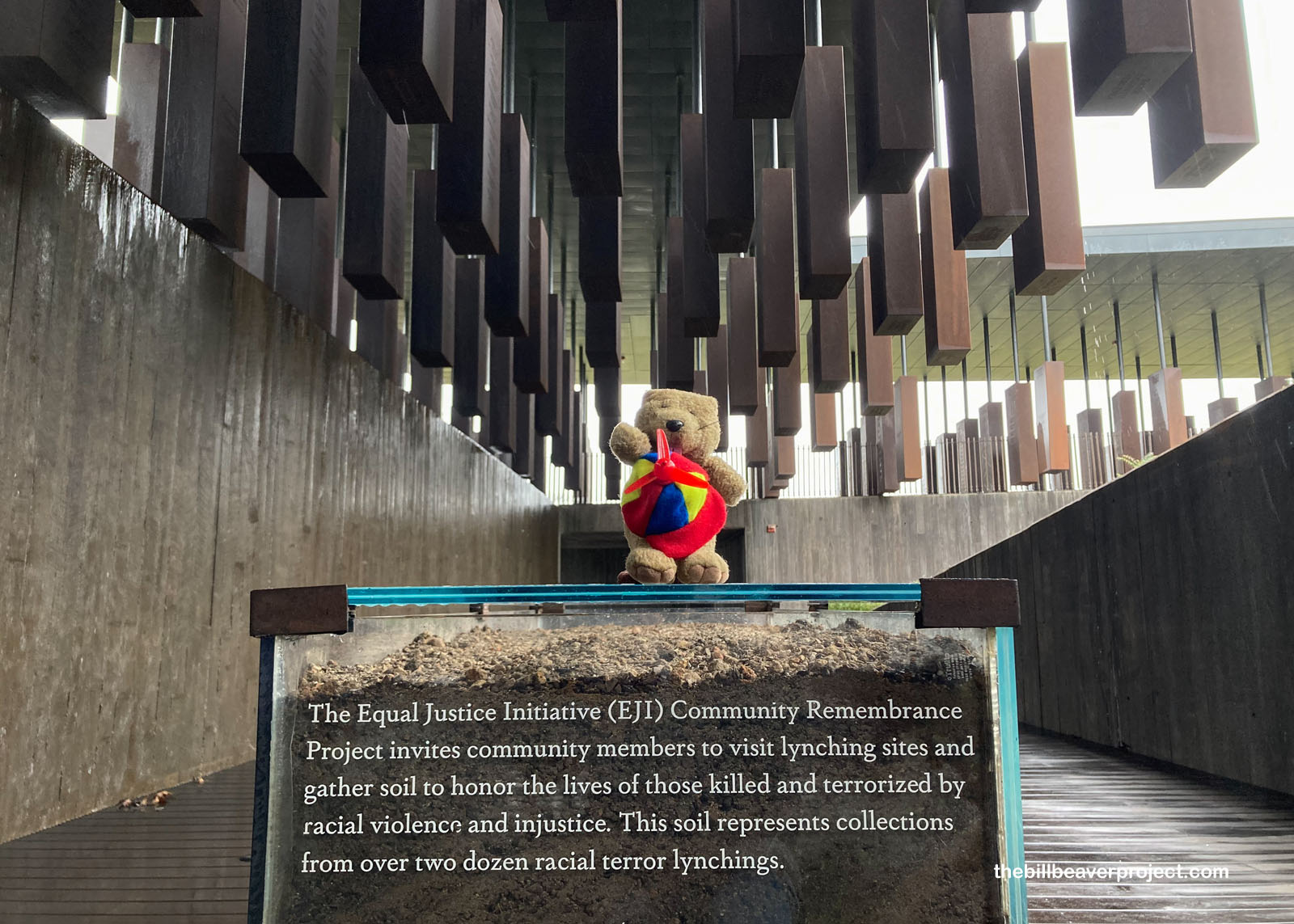 |
By now, I was chilled to the bone in more ways than one, only I had the luxury of getting back to a heater. With talks in the news about removing this kind of information from history books, places like the National Memorial for Peace and Justice, and the accompanying Legacy Museum, are super important for folks to learn about this terrible part of our history in order to build a better world going forward! For now, I have to race against time zones and the sunset, but I think I’ll carry today’s images with me for quite a while!
March on!

 Previous Day |
Total Ground Covered: 656.0 mi (1,055.7 km) |
 Next Day |
